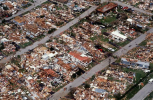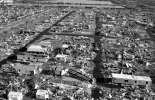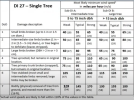Here's some interesting Figures from the study.
These are the wind speed probabilities for a Jeep Grand Cherokee (SUV) that was thrown 30-50 meters and a Chevrolet Silverado Z71 (truck) that was thrown 80-100 meters. A bombshell fact is they found a 0% probability of winds less than 200 mph (90 m/s) being capable of throwing a truck that distance. The SUV was 0% at 190 mph. This blows the doors wide open for reanalysis of dozens of tornado that achieved these feats and were given impossibly low wind speeds.
View attachment 46925
Here's the analysis of some haybales that were thrown. They found a 0% probability that sub 200 mph winds could throw them 50-100 meters.
View attachment 46926
View attachment 46927
Here is the results of all the specific items they modeled compared to their tornado's EF ratings.
View attachment 46928
I now understand why Tim Marshall was on board with the EF5 rating for Enderlin. This study was an absolute kill shot for the EF scale. I can't believe how much it has flown under the radar. These results imply that a large compact object being lofted more than 50 m horizontally is an indicator of an EF5 tornado. It also created an algorithm for calculating objects at all size, weights, and distances thrown.
It's also more evidence in support of the original Fujita scale.



